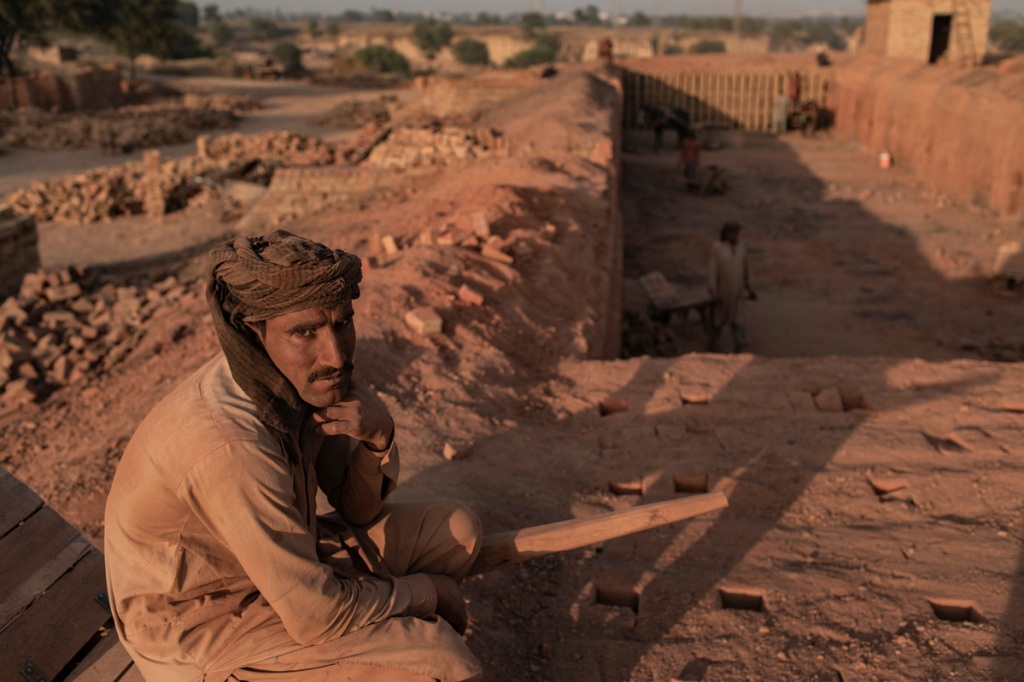We explore the hidden horrors of brick kiln slavery in Pakistan, where people are trapped in a cycle of forced labour and exploitation. This compelling photo story, narrated by a brick kiln worker, sheds light on the daily struggles and human rights issues faced by workers, urging for change and justice.
As told by Shazia Nawaz, a former brick kiln worker.
Editor’s note: This article was originally published in 2018.
In the heart of Pakistan, the brick manufacturing industry thrives through a dark tapestry of unpaid labor, ensnaring workers in servitude with the deceptive allure of debt-fueled employment. This article delves into the personal account of Shazia, a former brick maker, as she recounts her experiences and the unending cycle of debt servitude imposed by her ’employer,’ revealing how her astronomical debt will never be repaid.
“Sargodha is in the Punjab province of Pakistan. In many cities, I have worked as a brickmaker. In the cities Chakwal, Rawalpindi and Sarghoda where I received good money, I worked there making Chimneys.”

“In winter I produced approximately 4000 bricks and in summer I produced approx. 5000 bricks as the days were longer in summer so the working hours increased. I started when I was 12 years old. Everyone was doing the same work.
It was a tough job. I had to do this as there was no choice. I did not dream of anything else. I received 300 rupees for producing 1000 bricks. In the wet season, I was unable to work, so I had to take a loan from employers to run the household. The wet season is July, August.”

The spiraling and cyclical debt trap
“We had our own rooms, made of bricks and in some places, there was no water in our houses. I lived in the same house in the winter. I would get my food from local market towns. I was continuously taking loans if someone died and needed the money, borrowing from my employer.”

“I have an older brother who was previously held by my employer, nearby a landlord took him and paid off the loan. My brother is now with that same landlord (near Sargodha) who owns land for farming. He works in the landlord’s house. When we repay the money he can leave. 6 lakh rupees (£600,000) of the loan remains to be paid off. They spent a lot of money on weddings and funerals.
He gave his freedom to save me. We came to the city to earn money and to pay back the loan of my brother.” “I am getting married in February. He is not allowed to leave work”

Human rights are largely ignored
“Now I am relaxed in my current job (cleaning). My hands were always in clay whilst brickmaking and I would have to wash my hands in standstill water and then eat food. My hands are much better now.”
“…as a young girl I played with clay and then gradually began to make bricks.”
“On my own, I produced 3000 bricks. I was very tired. The house was within proximity of the chimney. I grew up like this. children would play while their parents worked so it was not a shock to me. It became routine.”
“It was very difficult and tough working during the hot summer days. In the winter snow/ice would be around the bricks and it would be very tough to put my hands into the clay.”

“I would never think of putting my child through the work I did.”
“The government should provide us with facilities and amenities, school, housing, access to hospitals”…“The law is not being implemented here”

“Many people came, asked questions (media and human rights organisations) asking ‘what are you doing etc…asking the procedure for making bricks’. There was one representative from every family who would be questioned by a camera crew.
Once a group of people came, interested in educating workers, they made a list of the students who wanted to be in their class. They left and never returned.”

Rumours of murder circulated widely.
“Where I worked they did not hit us, but I heard of bosses hitting workers – girls and boys. I heard where the bricks are baked, they would push people into the chimney door at the bottom and burn them alive. They used to practice this, possibly even now.”
“When we were really tired, we used to sleep without washing our hands, with the clay stuck to them. It is easy to wash off wet clay. We never used soap to clean them, just old water full of old clay and dirt”

Efforts to mitigate suffering are enduring
The chilling spectre of modern day slavery lingers in the shadows of many rural areas in Pakistan, where vulnerable individuals remain trapped in a cycle of exploitation and oppression. This deeply concerning issue has been met with a deafening silence from international human rights organisations, with only a meager fraction of their resources dedicated to its alleviation.
Meanwhile, the Pakistani government often turns a blind eye to the plight of its rural population, seemingly prioritising the prosperity of urbanised districts and the interests of the privileged ‘elite’. The more you challenge slave labour, it becomes evident that urgent action is needed to address the systemic challenges and injustices that persist in overlooked corners of the world. Especially when it seems that basic human rights and healthcare, which we typically take for granted in our daily lives, are being intentionally circumvented.
Photos: Ty Faruki


3 responses to “Brick Kiln Slavery in Pakistan: a Photo Story”
[…] upon a brick factory in the southern region of Jhang which piqued my interest, later learning the trade is steeped in slavery. I visited the country again to work on a personal project about climate change, only to come up […]
LikeLike
[…] Stan And […]
LikeLike
[…] Read: Stan And Slavhttps://stanisland.com/2023/10/30/pakistan-brick-kiln-slavery/ery […]
LikeLike